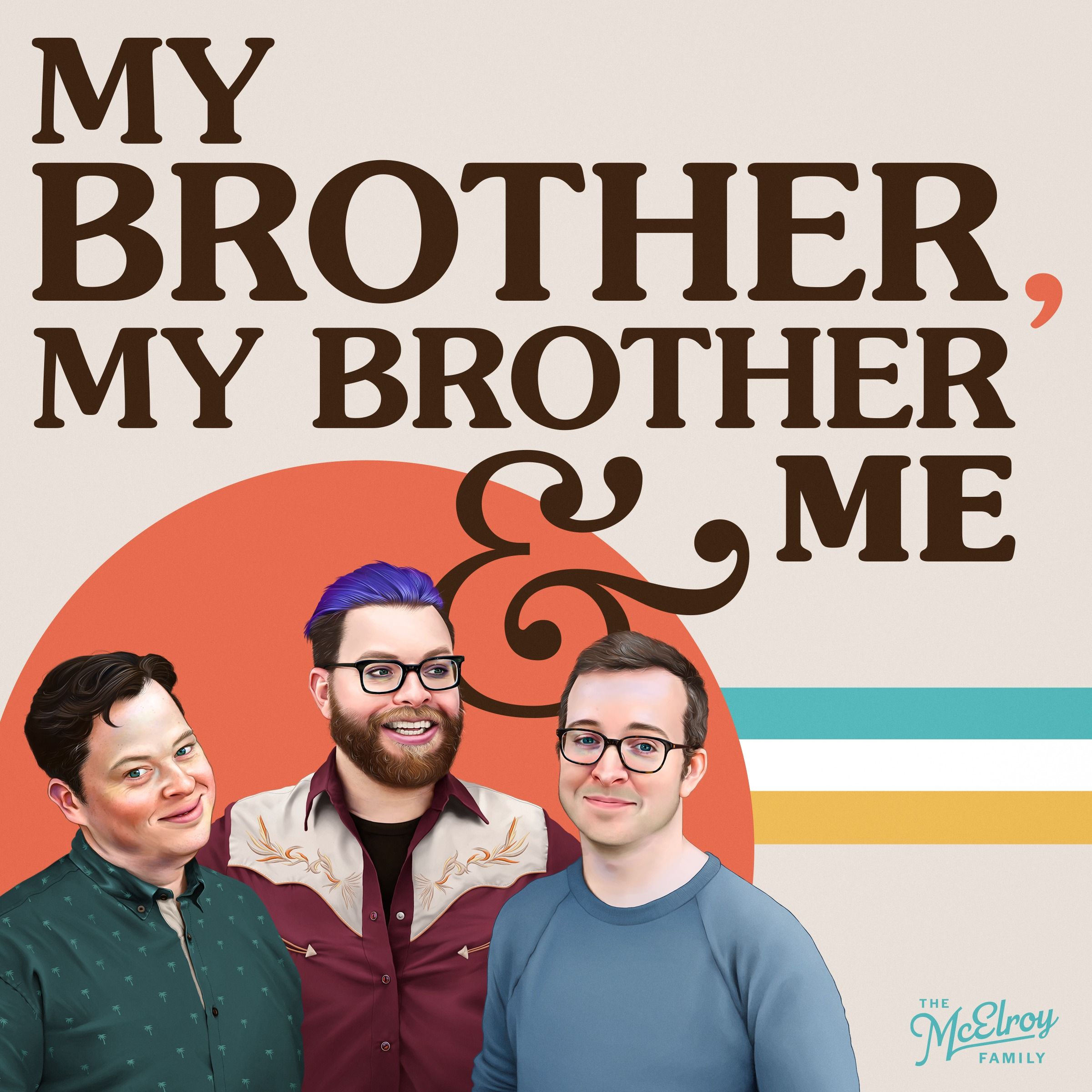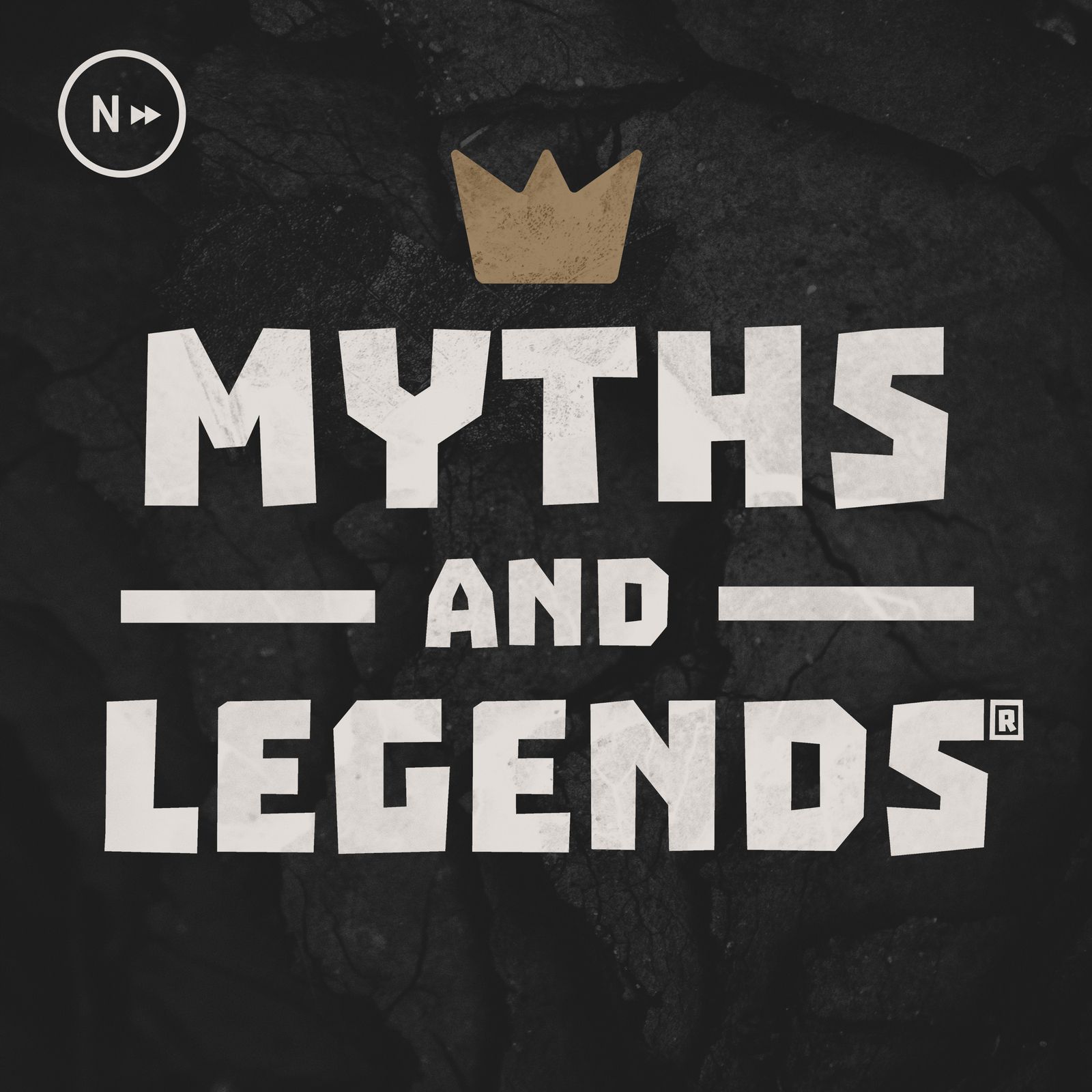
Myth Monsters
A bite sized look into the monsters of global folklore, cryptozoology and mythology with your host, Erin. Jump in and learn about your favourite monsters from Gorgons to Kelpies, to Wendigos to Bigfoot. Stay spooky every Thursday with a new episode with a new monster from another culture. Get in touch on Twitter at @mythmonsterspod
Myth Monsters
Jiangshi
In this week's delayed (sorry!) episode, we're hopping over to China for the terrifying but also quite weird Jiangshi! How do these monsters link to Vampires and Zombies? How do they relate to the first Emperor of China? Find out this week!
You can find us on:
Social media:
INTRO:
Hello and welcome to Myth Monsters, my name is Erin and I’ll be your host for these little snack bite size podcasts on folklore and mythical monsters from around the world.
These podcasts focus on the actual cryptids, folklore and mythic monsters from global mythology, rather than focusing on full stories of heroes and their big adventures.
I’ll also be dropping in some references that they have to recent culture and where you can see these represented in modern day content so you can learn more, and get as obsessed as I am about these absolute legends of the mythological world.
I’m sorry this isn’t the episode you were expecting this week - unfortunately, life does get in the way sometimes and I am struggling with severe burn out at the moment, so thank you for bearing with me and I’m sure I’ll release the expected episode to catch up at some point when I’m a bit better.
DESCRIPTION:
But focusing on the good parts, let’s hop on over to our monster of the week - which is a funny joke, you will come to realise later. Yes, we’re heading over to China to look at the terrifying, but slightly funny Jiangshi.
The Jiangshi are described as an undead vampire or zombie from Chinese folklore. They are both male and female, with pale, but furry white skin which can also be green, due to mould and decay growing on their body. They have extremely long tongues, long black fingernails that are sharpened and pointed, and they generally walk with their arms outstretched like a typical zombie. This is actually because they are dead and have settled into rigour mortis, where the body becomes stiff in death and all the muscles seize. Because of this, they are also unable to walk properly, which means they do tiny hops to move around.
You can usually find Jiangshi wearing the traditional Qing dynasty official wear, which is often a uniform-like coat and a round-topped hat so you could definitely spot them in a modern crowd. They cannot think, see, hear or speak but are able to smell, which tends to lead them to their meals. Speaking of meals, they are considered vampiric, but not in a traditional way of blood-sucking, although they sometimes did also do this. They would absorb a person’s qi or life force to survive which would make them a little bit more terrifying, and they were completely ravenous for it.
They were found throughout China and would only be found during the night, as during the day they would rest in coffins or dark places such as caves or forests to protect themselves from the sun. And that leads us nicely onto powers and weaknesses, where they do have quite a few. It’s said that they’re able to fly as well as generally being super strong and durable, and pretty much immortal until they are actively destroyed.
For weaknesses, as all vampires, they have a weakness for picking up lots of small objects, the sun and fire, but Jiangshi are also scared of their own reflection and a rooster's call as it implies the morning is coming. They also have a fear of anything made from the wood of a peach tree as peach is the essence of the five elements which deters evil spirits, as well as a 15 cm piece of wood nailed to the bottom of a door which should stop them from entering your house.
Two more more unique ways to stop them are by nailing Jujube seeds into the back of the corpse, as these are acupuncture points and make them completely stop in their tracks, and lastly a taoist talisman called Fulu, which is usually a piece of paper with a spell written on it in chicken blood to banish the spirit to the underworld.
But how could you prevent a Jiangshi from even existing or how do you become one? There were a few ways to become a Jiangshi such as a necromancer raising your dead body, if you were possessed by an evil spirit or if you committed suicide or were killed.
You could also become one if your good energy or hun was outweighed by your evil energy or po - if this happened all the good energy would leave your body in death and the po would take over to cause chaos. You can also become a Jiangshi in a very specific way, which is if you are not buried after your funeral, then struck by lightning and your coffin jumped over by a black or pregnant cat - but I think the criteria is pretty exact here.
ORIGIN:
So let’s hop on over with the Jiangshi to etymology, and we have an exact translation for this one. Jiang means hard or stiff in Chinese and shi means corpse, so Jiangshi literally means stiff corpse. However, they do have another nickname that I can only find in English, which is Chinese Hopping Vampire based on how they move about, so if you see this anywhere - they’re referring to the Jiangshi!
For their history, they do again have a very clear background which I appreciate whilst researching at least! The Jiangshi roots go all the way back to the first emperor of China, Qin Shi Huang, who ruled from 221 BC to 210 BC, and during his rule managed to establish all of the Chinese land. However, this meant many died under his banner and far away from home and so transporting the bodies back to the families was a really hard task and was super expensive.
An important note here is that there was a big taboo in China and other Asian countries that the dead must be buried, and quickly. It was believed that corpses, if left unburied and exposed to the elements, would be able to absorb the universe’s energy and reanimate as ravenous undead.
So a lot of families couldn’t afford this transport of their loved ones' bodies, and would try to figure out other methods of getting them back, as the Chinese at this time believed that they should be buried with family so that their souls didn’t get homesick. Initially in this early era of the Qin dynasty, there is a myth that they would hire in Taoist priests, who would use a ritual to reanimate the bodies and teach them to hop home with them guiding them at night, where they would ring bells to warn the people not to look as it is considered bad luck for a living person to see a Jiangshi.
Later on in the Qing Dynasty between 1644 and 1911 AD, the same kind of thing was happening. Labourers would travel for construction work and due to high mortality rates, they would also need transport home. Therefore, they created a way to get these bodies home safely - where they would be arranged upright in a single file and tied to long bamboo rods and carried by two men, but this gave them a hopping effect whilst being carried and also probably looked a bit like a foosball table setup.
There were other methods though, where one man would carry the corpse on his back, covered by a large robe and a mourning mask, whilst the other would walk ahead with a lantern and tell the carrier of any obstacles. They would also generally travel at night to avoid people seeing them, but also the cooler air would help with stalling decomposition and the horrendous smell.
There are two fun history points here too, one is that the Jiangshi are known for wearing Qing dynasty official clothing - but why is that? This is believed to be a dig at the Qing officials as during this time in history, China was also split into different ethnic groups - with the largest being the Han and the powerful, the Manchu, which included the Emperor himself.
The Manchu were deemed as barbaric by the Han, and forced them to abandon their cultural practices and traditions, usually with violence or bloodshed - therefore the Jiangshi were given this look to represent a visual depiction of that violence and injustice. However, of course a lot of time has passed since then - so it’s surprising that they have still maintained this look in modern folklore.
There is also belief that Jiangshi were a coverup boogeyman story, made up by smugglers who would transport bodies illegally and wanted to scare off the locals and law enforcement.
But Jiangshi are still really prevalent within Chinese folklore, with practitioners of feng shui actually changing Chinese architecture to include that 15 cm piece of wood to door frames, which is still commonly found. They are also commonly used in Chinese media, fiction and cinema which I’ve got a whole load of suggestions for later too.
In regards to similar monsters, of course we have the European Vampire as an easy comparison, but also the Haitian Zombie, which is where all western zombie depictions and adaptations derive from. The Jiangshi are probably the closest we’ve come to a zombie, with the outstretched arms and shuffling walk - however, there’s enough of a vampire overlap to sit nicely in between them.
CULTURAL SIGNIFICANCE:
Now onto modern media, surprisingly there are a lot for the Jiangshi - but they are mostly Asian media, so if you’re used to watching these you might know some of them!
For art, I would recommend looking at independent art this week because there’s not much around typical Jiangshi portraits. The independent stuff is pretty cool too.
In movies, we have; Hopping Mad: The Mr Vampire Sequels, Asian Dynamite, Crazy Safari, Fantasy Mission Force, The Jitters, Kid from Kwangtung, Kung Fu Wonder Child, The Legend of the 7 Golden Vampires, Our Friend Power 5, The Shadow Boxing, Swift Shaolin Boxer, Vampire Vs Vampire & Zombi 56.
For TV, we have; Forever Knight, Blood Ties, What We Do In The Shadows, Juken Sentai Geki ranger, Chou juu Sentai Liveman, Gremlins: Secrets of the Mogwai, Jackie Chan Adventures, Kung Fu Panda: Legends of Awesomeness, My Life as a Teenage Robot, Three Delivery, Spookiz, Dragon Ball, Rosario + Vampire & Shaman King.
In video games, we have ones such as; Abyss Crossing, The Battle Cats, Ages of Mythology, Castlevania: Order of Ecclesia, Darkstalkers, Super Street Fighter 4, La Mulana, Dungeon Crawl Stone Soup, Runescape, Zombies, Run!, Endless Nightmare, Splatoon, Gaia Online, Kung-Fu Chaos, Metal Slug Attack, Paper Dolls, Super Mario Land, Overwatch, Splatoon, Demon’s World, Touhou Project, Kingdom Hearts 2, Vice: Project Doom, Super Chinese Fighter, Ghostlore, Spelunky, Putty, The Legend of Silkroad, Phantom Fighter, Kung-Fu Kid, Sleeping Dogs, Flying Warrior & Genshin Impact.
My book recommendations this week are for Vampires: From Dracula to Twilight: The Complete Guide to Vampire Mythology by Charlotte Montague and A History of the Vampire in Popular Culture: Love at First Bite by Violet Fenn for Vampire mythology. But for Chinese folklore, have a look at Chinese Myths & Legends: Tales of Gods, Heroes & Monsters by various authors, which is due out in September!
DO I THINK THEY EXISTED?
Now it’s time for, do I think they existed?
Unfortunately, just like all the vampire-like monsters that we have covered before, it’s most likely a no I’m afraid. To add to that, the extra zombie influence does also add some more crazy supernatural bits that are unbelievable to it - making me a bit more sceptical than usual.
What I love about this monster though is the history and how rich that is. The interesting idea of having these corpses that aren’t buried from poor families rotting in the sun, absorbing that energy and then reanimating just to get home is really wholesome, but it’s also really cool. It’s definitely different in regards to spreading the vampire/zombie virus which we see in media for these monsters, and I’m glad that it's not spread through this to make them a bit different.
But that background of just trying to get bodies home to their family is really nice and I think it’s a really different take on any monster, and are they really monsters if they just want to walk home? I mean, they probably still want to eat our life energy which sounds worse than blood, so I’m pretty sure they’re still bad. I don’t think those priests thought about that side effect when they thought that would be a great plan to walk them home.
But what do you think? Did the Jiangshi terrorise ancient China? Let me know on Twitter!
OUTRO:
An interesting monster this week, it was really nice to finally cover a zombie-like monster rather than just a normal vampire one. I will be covering Zombies on a wider level at one point as a special though, so do keep your eyes open for that.
Next week, we’re heading over to the Alpine region of Europe to look at a magical dragon with poisonous breath from the Renaissance era, come figure out if they’re a snake or a dragon next Thursday!
For now, thank you so much for listening, it’s been an absolute pleasure. If you enjoyed this podcast, please give it a rating on the service you’re listening on - I’ve got the twitter for any questions, or suggestions on what monsters to cover next and I’d love to hear from you. The social media handles for Tiktok, Youtube, Threads and Instagram are mythmonsterspodcast, and twitter is mythmonsterspod. But all of our content can be found at mythmonsters.co.uk, including some very cool merchandise - you can also find us on Goodpods, Buymeacoffee and Patreon if you want to help me fund the podcast too.
Come join the fun though and share this with your pals, they might love me as much as you do.
But for now, stay spooky and I’ll see you later babes.
Podcasts we love
Check out these other fine podcasts recommended by us, not an algorithm.

FolkLands
Tim Downie, Justin Chubb
Chatsunami
Satsunami
The Howdy Beans Podcast!
Luke The Elder Bean!
My Brother, My Brother And Me
The McElroys
Myths and Legends
Jason Weiser, Carissa Weiser, Nextpod
Lore
Aaron Mahnke
Exploration: Dreamland
Exploration: Dreamland
The Neatcast
Jeremy, Zack, Mike
Effin' Cultured
Bobby, Griff, and The Rik
